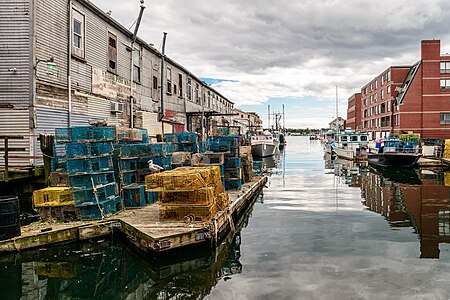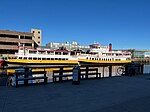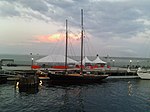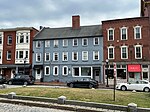Custom House Wharf
Maine building and structure stubsTransport infrastructure completed in the 18th centuryWharves in Portland, Maine

Custom House Wharf is a historic wharf in Portland, Maine, on the edge of the Fore River. Named for Portland's United States Custom House, which stands across Commercial Street from the wharf, on Pearl Street, the wharf is located between Maine Wharf (to the north) and Portland Pier (to the south).Today's businesses that exist on the wharf include Harbor Fish Market, Boone's Fish House & Oyster Room, and The Porthole pub, which was established in 1929.
Excerpt from the Wikipedia article Custom House Wharf (License: CC BY-SA 3.0, Authors, Images).Custom House Wharf
Custom House Wharf, Portland
Geographical coordinates (GPS) Address Nearby Places Show on map
Geographical coordinates (GPS)
| Latitude | Longitude |
|---|---|
| N 43.65662 ° | E -70.24927 ° |
Address
Maine Wharf
Custom House Wharf
04101 Portland
Maine, United States
Open on Google Maps










